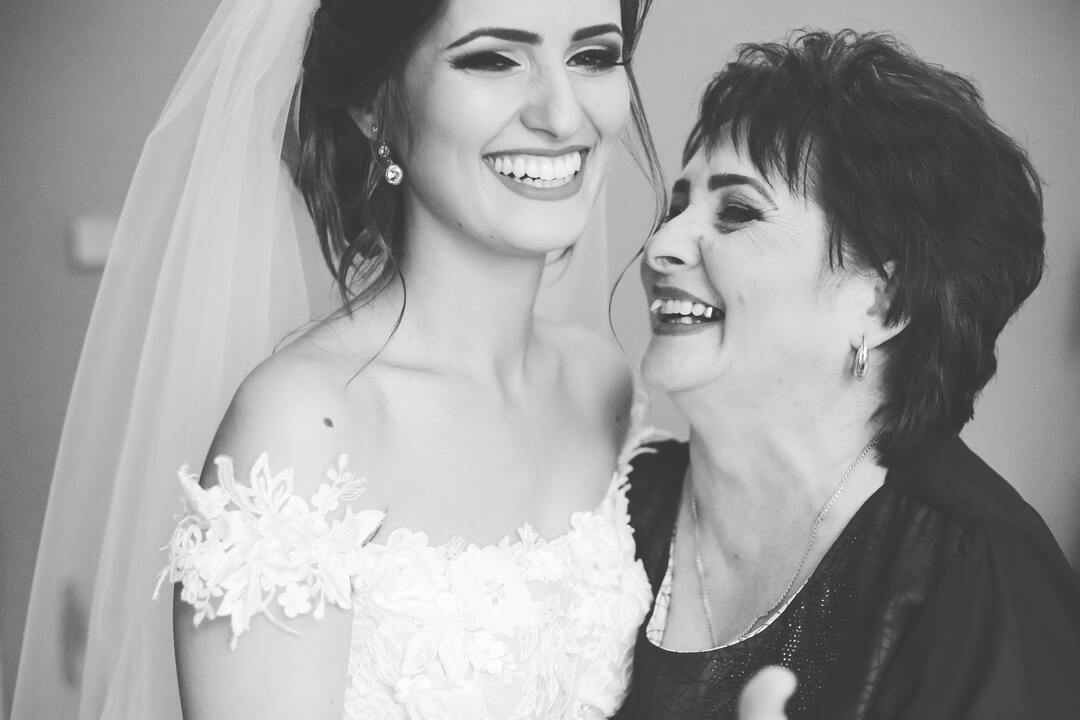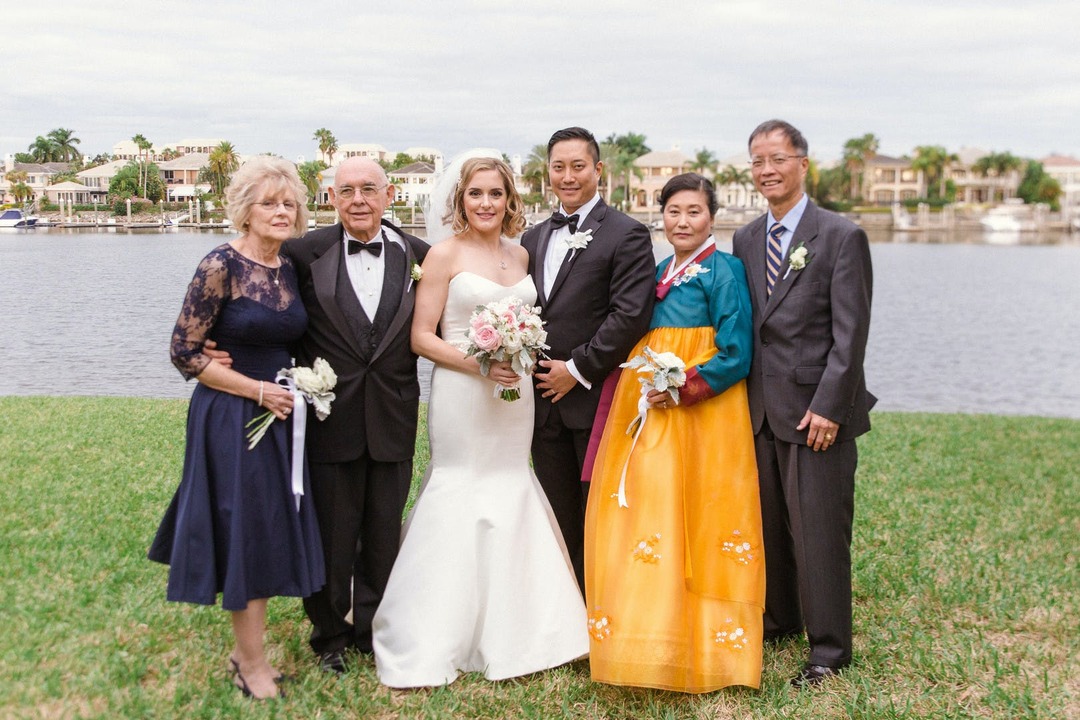what to do with used mother of the bride dresses
Your child's wedding is an exciting and eventful time, and whether you've thought about it already or not, what you wear to a special occasion can be a big deal. However, between figuring out what color to wear, the style of your dress, and following best etiquette, things can get a little complicated. You might even be wondering, what the difference between the mother of the bride and the mother of the groom's dress is? In reality, the answer is not much. What's different is who takes the lead. Here, we break it all down.
Taking the Lead and Shopping Schedules
The most significant difference between the mother of the bride and mother of the groom attire has nothing to do with the garments themselves but is actually how the gowns are selected and when. Traditional etiquette dictates that the mother of the bride takes the lead and shops for her wedding attire first. However, many modern women use this advice as more of a guideline than a strict rule. Our suggestion? Keep the lines of communication open throughout the wedding planning process. Here is our best advice for both women shopping for the perfect dress for a special occasion.
Mother of the Bride: As the bride's mother, you may be privy to a lot of information about the details of the wedding and your daughter's preferences. It's your responsibility to understand what she wants from both you and the groom's mother in terms of your attire.

Photo Credit // Unsplash
Typically, you shouldn't start shopping for a dress until the bride has selected her dress as well as those for the bridesmaids. If this hasn't happened by about six to eight months before the wedding, check in with your daughter to see if she has a timeline, or ask if she is ok with you beginning to shop. Then, make sure you call the mother of the groom to let her know the details—like color and style—of the dress you plan to buy for the wedding day, plus share information about when you plan to start your search. This will give her a better idea of what outfit she should be looking for and when.
Mother of the Groom: As the groom's mother, you'll want to let the mother of the bride take the lead during the dress shopping process. Generally, you should expect to start your dress shopping around six months before the wedding. However, you should wait to hear from the bride's mother before you begin. She should let you know the color and style of her dress, so you can coordinate by selecting a complimentary design. If you haven't heard from her by about five months before the wedding, don't be afraid to reach out and ask for an update on the dress code. She should appreciate that you want to respect traditional wedding attire etiquette and will hopefully be able to give you some extra details, so you can begin shopping for your perfect dress.
Coordinate Color and Formality

Photo Credit // Lisa Houston Photography
Unless you are specifically asked to do so by the bride, both mothers should avoid matching each other or the bridesmaids' dresses. However, coordination is still crucial for chic photographs on the big day. So, at the very least, both mothers will want to wear colors that complement the other. But it's important to check in with the bride before you make any decisions. Maybe she envisions everyone wearing neutral tones, or perhaps she prefers bold and bright. Regardless of her preference, chances are she has one, so make sure you know what it is.
Make sure you're both wearing the same formality of dress as well. Otherwise, photos will appear off-balanced, and it might be misconstrued that one mother is trying to outshine or outdo the other. If the mother of the bride selects a more casual and laid-back look, most likely approved by the bride herself, then the groom's mother probably won't want to choose an overly formal dress. Open communication is key.
Dress Length
This is one element of the dresses that do not have to match, as long as the formality is coordinated. For example, if the mother of the bride dress consists of a floor-length gown for an evening affair, the mother of the groom may decide to wear a knee-length cocktail dress. Similarly, if the bride's mother chooses to wear a tea-length dress for a daytime garden wedding, the groom's mother may opt for a flowy maxi dress. The length of your gown should be about what you are most comfortable in, so try out a few options and choose what works best for you and your style.
Etiquette for Step-Mothers
In general, you'll do your best to avoid matching with the bridesmaids or the mothers of the couple getting married. However, to determine whether or not you should also coordinate with both mothers, check in with the bride. Chances are, you will be in at least a few group photos with the parents of the bride and groom, and perhaps the wedding party. So, you'll want to wear something that doesn't clash with the rest of the group in photos.
Much like the mother of the groom, step-mothers of both the bride or groom should follow the lead of the mother of the bride. Specifically, you'll want to ensure both the mother of the bride and mother of the groom have selected their dresses before you begin looking for yours.
Dress Guidelines for All Mothers
Though you're no longer relegated to wearing matronly dresses, there are a few guidelines mothers of the bride, mothers of the groom, and step-mothers should all follow when dress shopping:
- No White: It may seem obvious, but wearing white on someone else's wedding day is frowned upon. This includes shades of bright white, ivory, champagne, and some off-whites.
- Avoid Black: As a color associated with grief, it's best to avoid wearing a black dress to a wedding unless it's a formal affair or has been approved by the bride.
- Keep It Simple: The design of your dress does not need to be dull or drab, but you should attempt to keep things simple. Avoid too many embellishments or bold, dramatic colors. These eye-catching elements may distract guests from the bride, who should be the center of attention on her big day.
- When in Doubt, Ask the Bride: If you've found a dress you love, but aren't sure about the color, style, or formality, don't be afraid to ask the bride for her opinion. Of course, you should feel beautiful and comfortable in whatever you wear, but she probably has a clear vision for the aesthetic of her big day, and you should attempt to support that.
The mother of the bride and mother of the groom dresses aren't all that different in terms of colors, style, or design. The contrast between these two gowns is in how they are selected. Both women should consider the bride's preferences, but the mother of the bride should be allowed to take the lead on dress shopping for all mothers and step-mothers of the bride and groom. Following these simple guidelines are sure to make the process go smoothly and efficiently.
what to do with used mother of the bride dresses
Source: https://www.zola.com/expert-advice/mother-of-the-bride-vs-mother-of-the-groom-dresses-whats-the-difference